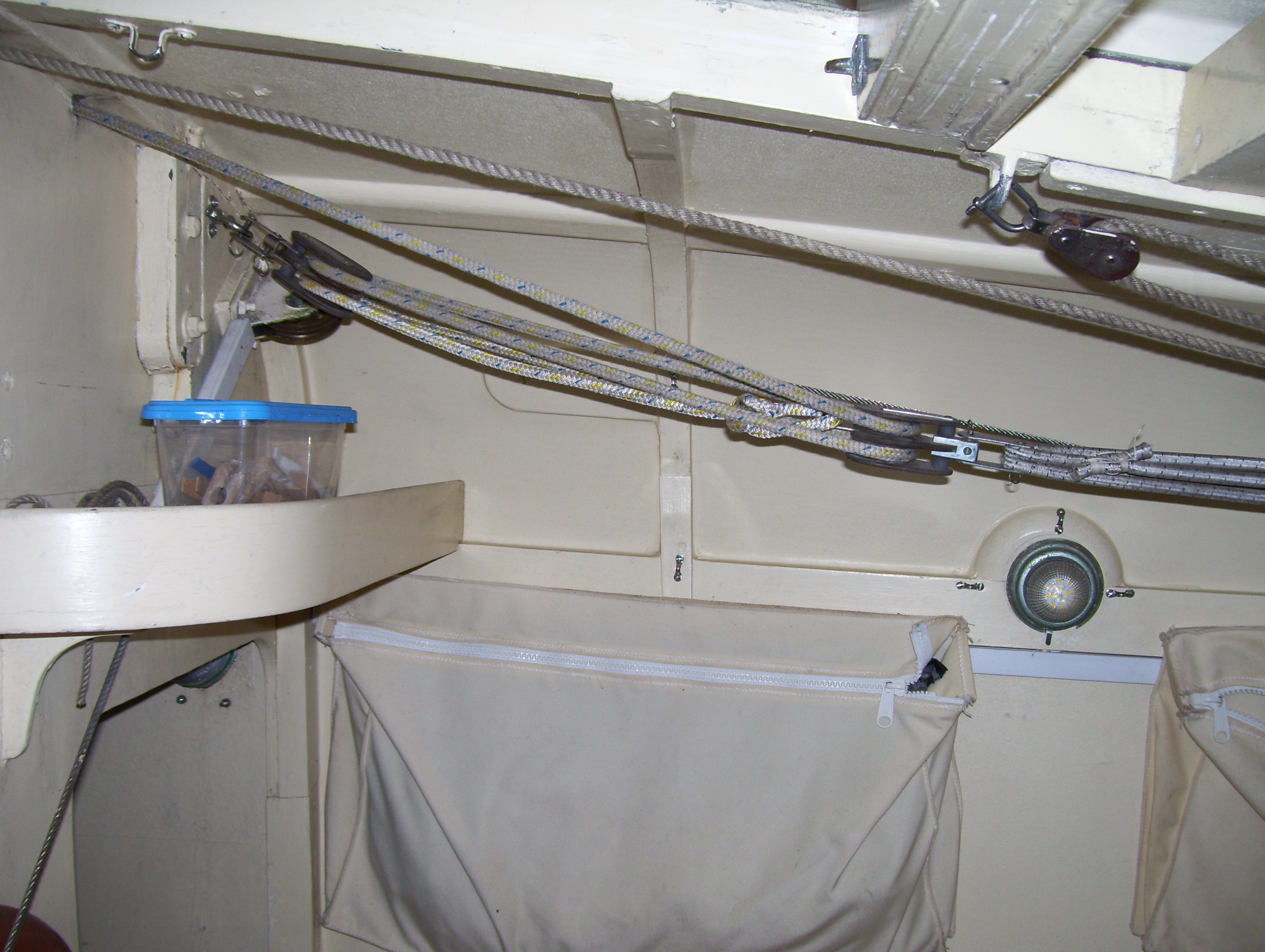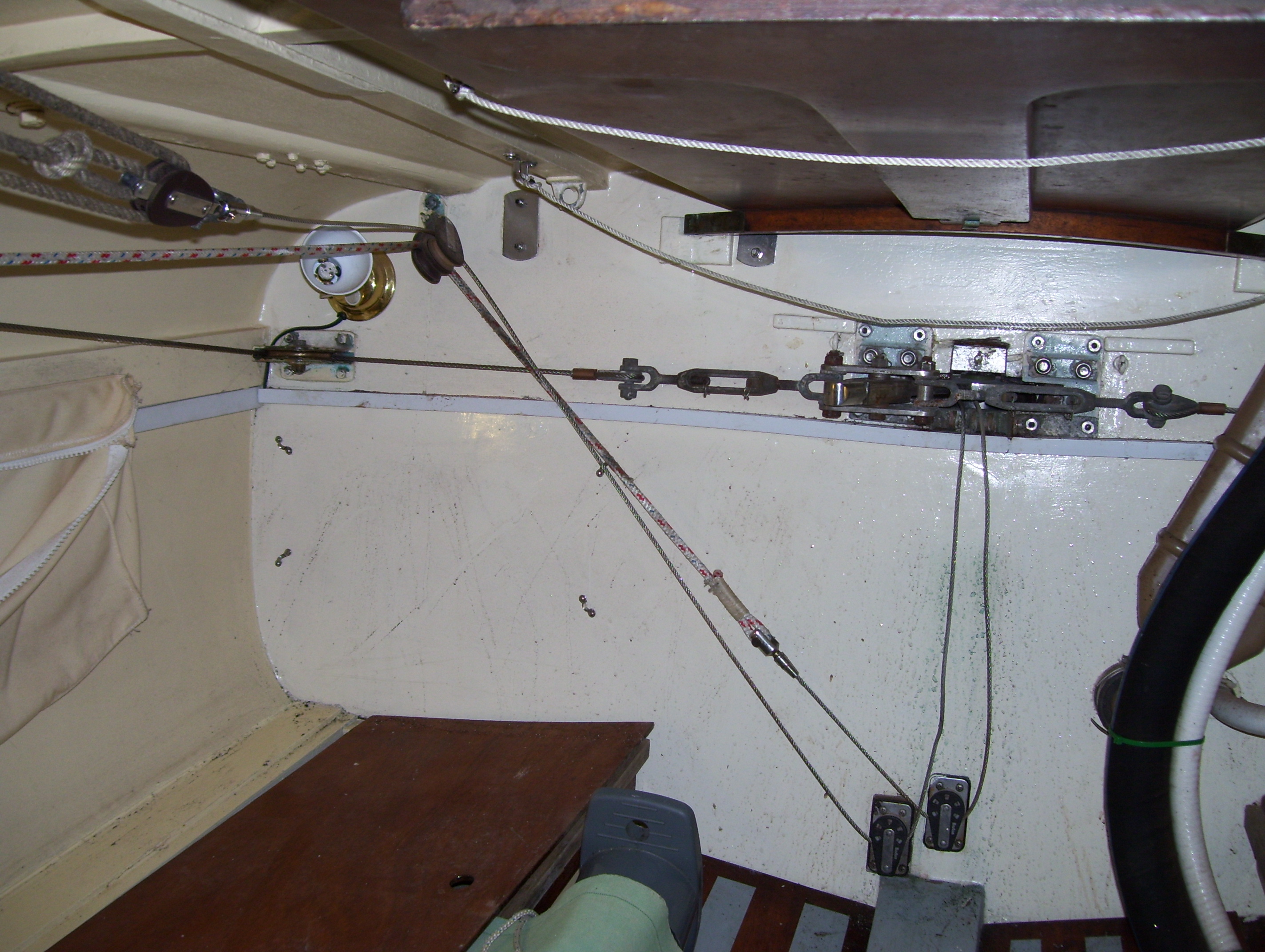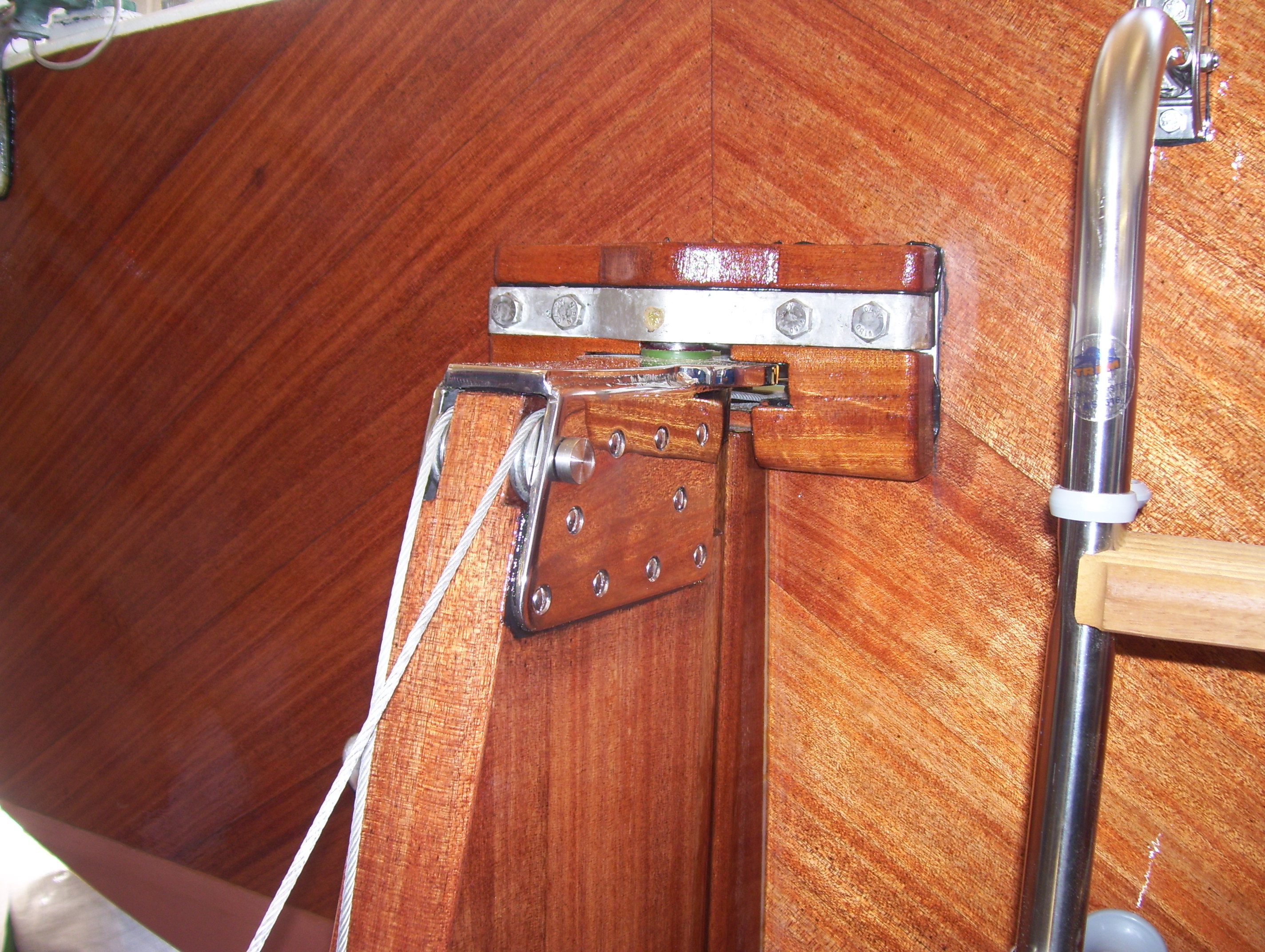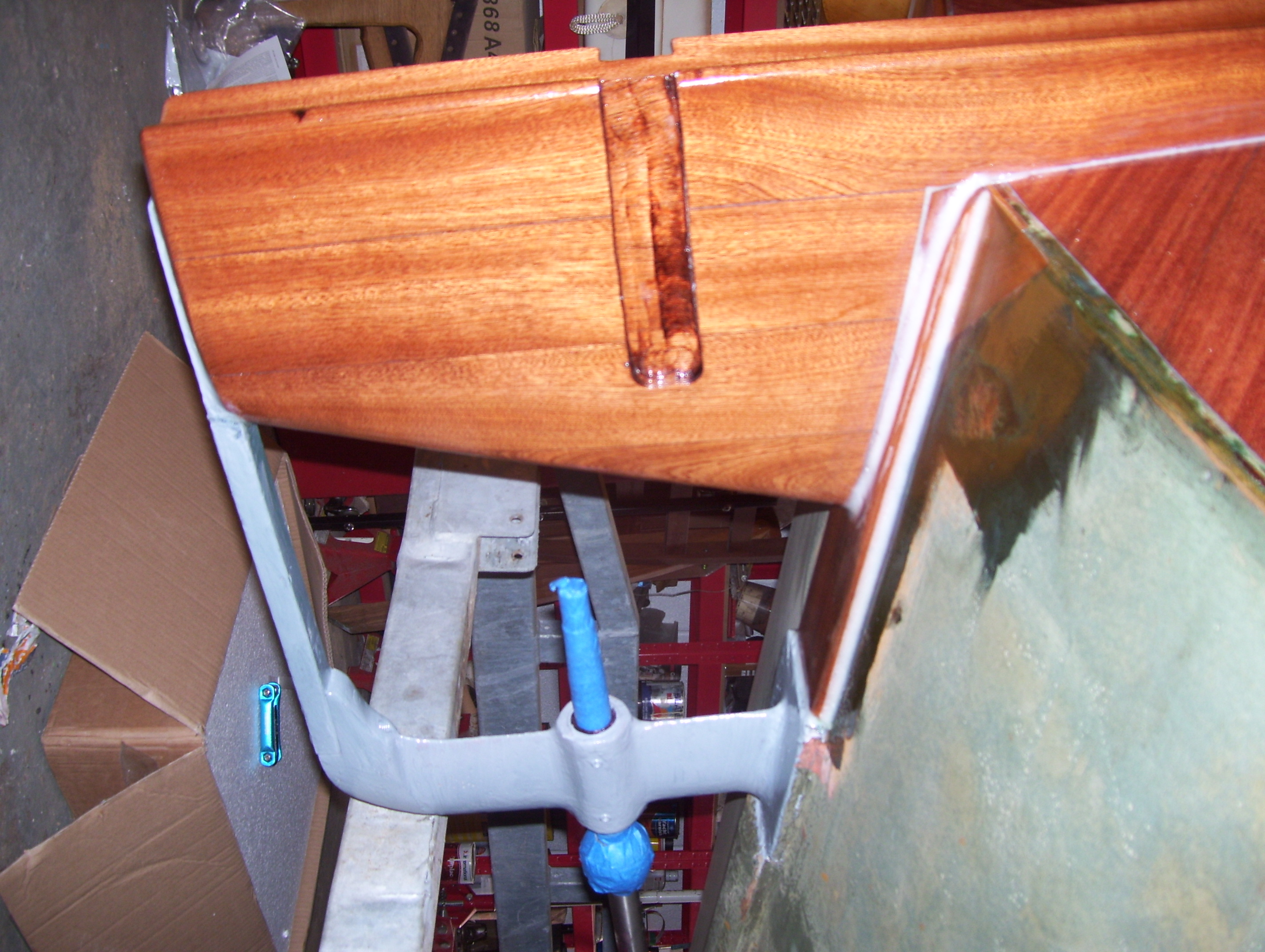The transom hung rudder is a heavier version of a typical dinghy rudder, with a large lifting blade:
This is the rudder on a Titania, but in principal the same as an Atalanta. In this case the rudder stock is wooden, while most are aluminium alloy throughout.
The Blade
This is made from 12mm thick alloy.
This photo gives some idea of the way the rudder stock and blade fit together. It is possible to fit the blade back to front, which results in heavy weather helm!
Whipstaff
The whip staff is just a vertically pivoted tiller:
In this case the helm is hard over (it is the only way the boat fits into the garage) but I am sure you get the picture. Behind the tiller you can see two rope ends. One controls the rudder uphaul, and the other the downhaul. You can see the other ends of the up and down haul leading to the bottom of the transom and then up to the rudder head where they pass through the transom and into the rudder stock. The wires leading off from the rudder head, to left and right, lead through pulleys to the whipstaff.
Pulleys and Wires
These cross the aft cabin and can be seen in the following photos:

Rudder blade uphill and downhaul are the rope tackles shown curving below the rudder control wire which leads from a brass pulley in the top left hand corner

The rudder control wires, uphill and downhaul are all shown in this view of the rear end of the aft cabin
Weather Helm
The Atalanta carries little weather helm under normal conditions. If weather helm or lee helm is experienced then there is something wrong. Clearly the sails set under particular conditions affect the weather helm, but when this occurs the keels can be lifted slightly, which moves the hulls centre of lateral resistance aft, and should enable the helm to be balanced. In the case of my own boat (which is a Titania but almost identical to an Atalanta) I invariably find the helm well balanced in all conditions. I do know from practice how much to furl the genoa, and when to take a reef in the main sail. Doing this in the correct order will minimise steering difficulties.
Calista will sail to windward in for 5 to 10 minutes with the helm locked amidships.







